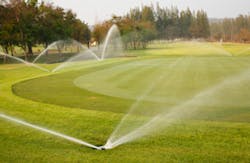SAN FRANCISCO — The Sonoma-Marin (California) Saving Water Partnership (SMSWP) has received the U.S. Environmental Protection Agency's (EPA) national WaterSense Excellence Award for their work promoting WaterSense and water-efficient irrigation practices, according to a press release.
Six other Excellence Awards were given nationally, the release noted.
"Putting our collective resources together to get smart about how we consume water is critical to meet today's resource needs and those of generations to come," said Jared Blumenfeld, EPA's regional administrator for the Pacific Southwest.
According to the release, the SMSWP worked with local and national utilities and organizations last year to convert 340,000 square feet of grass lawn into water-smart landscaping, installing 57 greywater systems and helping local businesses to save nearly 24 million gallons of water.
The WaterSense program has saved Americans 487 billion gallons of water since its inception in 2006, the release reported.
Please visit www.epa.gov/watersense for more information.
